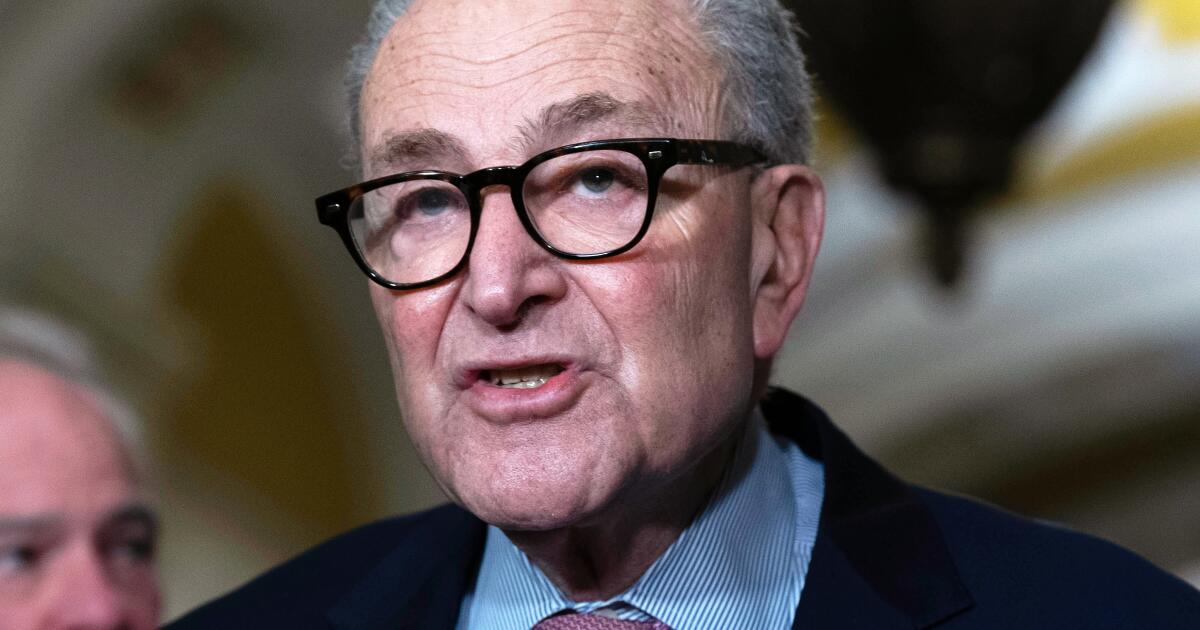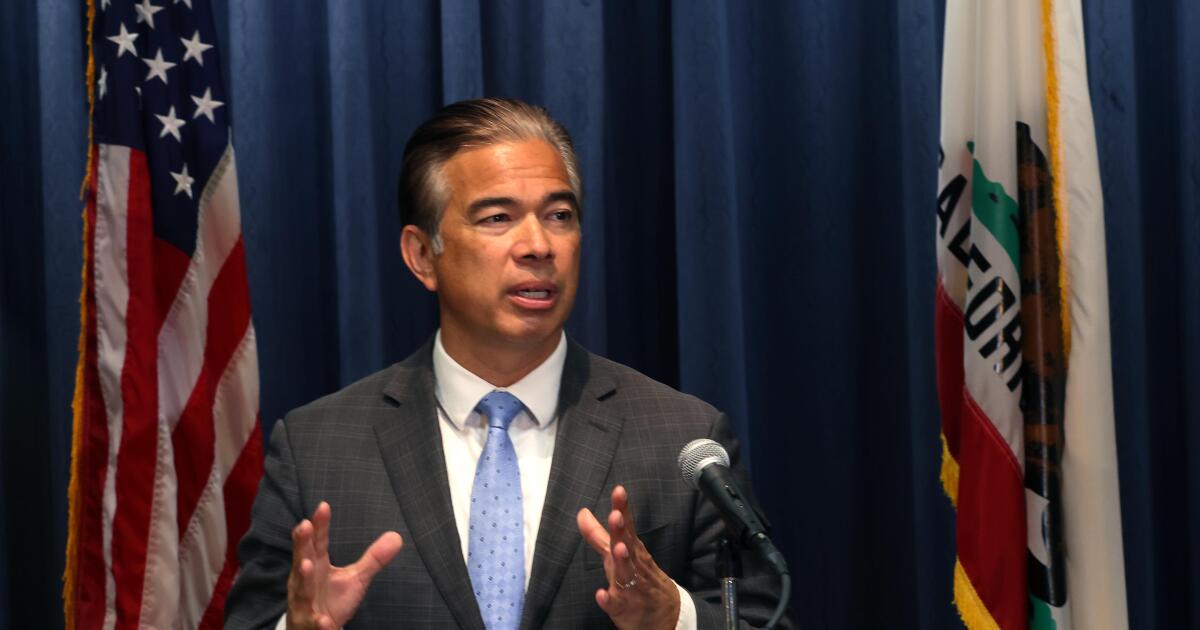Schumer urges Senate to take legal action over Justice Department’s staggered Epstein files release
NEW YORK — The Senate’s top Democrat urged his colleagues Monday to take legal action over the Justice Department’s incremental and heavily redacted release of records pertaining to the late sex offender Jeffrey Epstein.
Minority Leader Chuck Schumer introduced a resolution that, if passed, would direct the Senate to file or join lawsuits aimed at forcing the Justice Department to comply with the Epstein Files Transparency Act, the law enacted last month that required disclosure of records by last Friday.
“Instead of transparency, the Trump administration released a tiny fraction of the files and blacked out massive portions of what little they provided,” Schumer (D-N.Y.) said in a statement. “This is a blatant cover-up.”
In lieu of Republican support, Schumer’s resolution is largely symbolic. The Senate is off until Jan. 5, more than two weeks after the deadline. Even then, the resolution will likely face an uphill battle for passage. But it allows Democrats to continue a pressure campaign for disclosure that Republicans had hoped to put behind them.
The Justice Department said it plans to release records on a rolling basis by the end of the year. It blamed the delay on the time-consuming process of obscuring victims’ names and other identifying information. So far, the department hasn’t given any notice when new records arrive.
That approach angered some accusers and members of Congress who fought to pass the transparency act. Records that were released, including photographs, interview transcripts, call logs, court records and other documents, were either already public or heavily blacked out, and many lacked necessary context.
There were few revelations in the tens of thousands of pages of records that have been released so far. Some of the most eagerly awaited records, such as FBI victim interviews and internal memos shedding light on charging decisions, weren’t there.
Nor were there any mentions of some powerful figures who’ve been in Epstein’s orbit, like Britain’s former Prince Andrew.
Deputy Atty. Gen. Todd Blanche on Sunday defended the Justice Department’s decision to release just a fraction of the files by the deadline as necessary to protect survivors of sexual abuse by the disgraced financier.
Blanche pledged that the Trump administration would meet its obligation required by law. But he stressed that the department was obligated to act with caution as it goes about making public thousands of documents that can include sensitive information.
Blanche, the Justice Department’s second-in-command, also defended its decision to remove several files related to the case from its public webpage, including a photograph showing Donald Trump, less than a day after they were posted.
The missing files, which were available Friday but no longer accessible by Saturday, included images of paintings depicting nude women, and one of a series of photographs along a credenza and in drawers. In that image, inside a drawer among other photos, was a photograph of Trump, alongside Epstein, Melania Trump and Epstein’s longtime associate, Ghislaine Maxwell.
Blanche said the documents were removed because they also showed victims of Epstein. Blanche said the Trump photo and the other documents will be reposted once redactions are made to protect survivors.
“We are not redacting information around President Trump, around any other individual involved with Mr. Epstein, and that narrative, which is not based on fact at all, is completely false,” Blanche told NBC’s “Meet the Press.”
Blanche said Trump, a Republican, has labeled the Epstein matter “a hoax” because “there’s this narrative out there that the Department of Justice is hiding and protecting information about him, which is completely false.”
“The Epstein files existed for years and years and years and you did not hear a peep out of a single Democrat for the past four years and yet … lo and behold, all of a sudden, out of the blue, Senator Schumer suddenly cares about the Epstein files,” Blanche said. “That’s the hoax.”
Sisak and Neumeister write for the Associated Press. AP reporter Kevin Freking in Washington contributed to this report.





